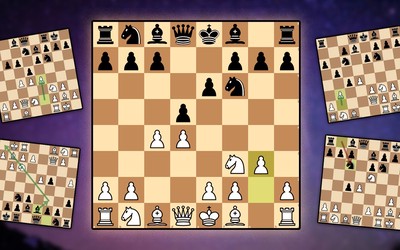
Strategic Guide: How to Beat the Minority Attack
Today, you will learn how to dismantle the Minority Attack, in multiple different ways.Introduction
The Minority Attack is one of White's most famous middlegame chess strategies, in large part due to its simplicity. Not to mention, it can occur via a wide array of 1.d4 openings. In particular, the QGD Exchange Variation: 1.d4 d5 2.c4 e6 3.Nc3 Nf6 4.cxd5 exd5 5.Bg5.
However, playing AGAINST the Minority Attack is by no means a simple task, and even strong players can often stumble into awful positions against it.
Here is a recent game of a strong 2600 GM losing with very little resistance (albeit in a blitz game), as an example of what we want to avoid:
How to Play Against the Minority Attack
So, now that we know what the Minority Attack is, and what not to do, let us discuss how we can counter it.
Broadly speaking, there are two ways to go about things:
- Allow White to play b5
- Stop White's b5, by playing ...b5 ourselves
The first strategy generally relies on some sort of kingside counterplay - otherwise Black will suffer a similar fate as we saw in the Introduction.
The second strategy is extremely committal (some would consider risky), but I personally have a soft spot for it, and many players at the club-level are not well equipped to face it.
Strategy 1: Allow b5
Generally speaking, if we are going to allow White to play something like b5, we want to make sure we have some form of counterplay - which will usually be on the kingside. However, our first example here will show that this is not always the case.
The next example I'd like to show you is an incredible display of Black using their minor pieces to launch a devastating attack on a White king with no defenders present.
Finally, our last example for this section involves a rather unique way of playing. Black combines the use of their pieces and pawns to create an irresistible attack.
Strategy 2: Preventing b5 with ...b5!
As I mentioned earlier, this strategy can be a bit risky in some sense, because of all the positional weaknesses being created - mainly the backward c6 pawn, and weak c5 square.
However, Black's strategy very much hinges on the idea that if they get a knight to the c4 square, White will have a very difficult time creating any kind of play on the queenside.
In our first example here, Black played ...b5, but then didn't follow it up in the most precise way.
The next example shows how dangerous this setup can be if White allows Black to achieve both ...b5 and ...a5 - and the importance of White playing a4 after Black plays ...b5.
The final example of this section nicely ties everything together. Black shuts down any White counterplay on the queenside, and then proceeds to take control in the center and kingside.
Miscellaneous
There was one final example I wanted to show, but didn't neatly fit into the other categories. It is basically a Minority Attack gone wrong straight from the get-go. Sometimes White will support the move b4 with a3 instead of Rb1. If that is the case, White potentially needs to be careful about the a3 pawn being loose.
Conclusion
I (and perhaps many of you) used to be of the belief that the Minority Attack was a very risk-free way for White to easily gain an advantage and put pressure on Black. I hope after reading this article, you understand that is anything but true.
Hopefully this serves you well, and will help you gain the upper hand in your own games when faced with this strategy :)


